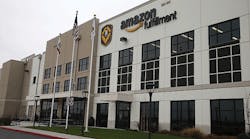E-commerce fundamentally changes the way U.S. consumers shop and, in turn, how retailers structure their supply chains to deliver to them. Despite how pervasive e-commerce has become, the sector is still in its infancy and holds potential for exponential growth. Currently, online sales are a $220 billion global industry and could grow to $370 billion by 2017. The rise of e-commerce has only accelerated with the advent of new technologies, most notably the smartphone, and although technology will never completely replace the shopping experience, competition from the Internet has emerged as the greatest single strategic challenge facing the bricks-and-mortar retail world.
Retailers of all sizes and categories are recognizing that their back-end supply chain is front and center in the discussion of how to win customers in the digital age. Ultimately, the difference between profit and loss for many retailers will rest upon their supply chains.
Traditional retailers have noticed the changing landscape and are responding with a fundamental shift in the way they do business. Initially, they reacted to the changing landscape by implementing multi-channel platforms that allowed them to sell products either in a store or on the web. In theory, the multi-channel platform would afford retailers the ability to capture sales at either touch point. However, in reality, operational and technology challenges hampered their efforts to meet customer demands for a seamless shopping experience.
Multi-channel retailers were also burdened with the inefficiencies of having separate systems running applications for their e-commerce, in-store and catalog channels. By keeping these channels separate, retailers ended up owning significantly more inventory than if they had managed purchase orders as a comprehensive, unified process. As a result, retailers' embrace of the omni-channel distribution model arose.
Quite simply, omni-channel retailing is the evolution of the multi-channel distribution model, with a focused concentration on providing a seamless approach to the consumer experience. The difference between multi-channel and omni-channel is subtle but significant. In the multi-channel model, warehouse and distribution facilities serving online and brick-and-mortar functions are operated independently from each other. In the omni-channel approach, the two are seamlessly integrated.
At its core, omni-channel is the idea—and delivery process—that recognizes that the medium in which a customer purchases a product is less important than the experience the customer desires. Retailers view omni-channel as a key brand differentiator, and improving their ability to provide customers with a seamless shopping experience across all channels is a top priority.
A Strategy to Thwart Showrooming
One feature of the omni-channel model is the concept of showrooming: the practice of examining merchandise or products in a store and then buying it online for a lower price. Electronics retailers have been among the most vulnerable to showrooming, since the majority of shoppers still like to see and touch electronic products before making a purchase commitment. At the same time, electronics are among the most popular online purchases because of their relatively small size. To combat this and to preempt the same-day delivery model that online behemoth Amazon is implementing, retailers are utilizing omni-channel delivery systems to offer shoppers the option of ordering online and picking up the orders at the store in the same day.
In the fast-moving world of e-commerce, even these relatively new strategies are evolving. Amazon remains both the giant and the model for purely online e-commerce players. It currently has over 50 million square feet of distribution center (DC) space in the United States and is looking to expand to as much as 90 million square feet by 2017. To accomplish the task, Amazon is sometimes growing its distribution capabilities by as much as a million square feet at a time, having signed multiple build-to-suit development deals around the country in recent years. For perspective, these 1 million-square-foot-plus DCs are so large that the curvature of the earth can vary the elevation from one end of the building to the other by an inch or more.
Amazon's astounding growth reflects the new imperative in e-commerce: the ability to provide same- or next-day delivery. This is a trend impacting all of the logistics players in the game of online commerce, whether 3PL firms that service the supply chain or retailers looking to boost their e-commerce platforms to provide better omni-channel options to compete.
The distribution model required by e-commerce companies and omni-channel retailers is reshaping the way both U.S. supply chains and retail stores are designed. For instance, retailers are shrinking their store footprints, moving inventory that has historically been held at the stores further up the supply chain. Also, the consumer-centric focus on the front end creates even more complexity on the back end of the supply chain for logisticians. Distribution networks must remain nimble and build in flexibility to respond to changing consumer demand patterns. The "how" and "where" a product is bought aren't static. They constantly evolve with new technologies.
This evolution is reflected in the changing requirements and building characteristics of the big-box DC. In the past, the stereotypical retail DC was centrally located and designed to serve numerous stores in multiple markets. The new retailer-driven e-commerce fulfillment center may still supply stores throughout a geographic area, but now it must also fill the direct orders of as many as 25,000 customers a day. As a result, the building itself must be both larger and more specialized to accommodate greater inventory and high-tech order fulfillment equipment operated by an increasingly skilled warehouse worker.
Several trends have become clear. First, 36-foot clear height is the new minimum, with some retailers looking at 40-foot or 42-foot clear height to accommodate the need for mezzanine space and multi-level conveyor systems. Second, power capacity is increasingly important due to the robotics and modern technology needed to effectively operate. Third, human capital needs to be considered as workers must master the latest fulfillment technology.
Furthermore, e-commerce related distribution operations often run 24/7 and have greater manpower requirements to manage order flow and inventory. Whereas a traditional distribution facility might have 40 to 100 employees per shift, an e-commerce fulfillment center requires 200 to 1,000 or more employees per shift for the meticulous task of individually pulling each online order for a customer. And because this is retail, albeit in a warehouse setting, demand surges during the holidays require parking capacity for a workforce that may double or triple depending on the season. Also, e-commerce facilities must be more strategically located to deliver an order to the customer's front door as quickly as possible.
These changes have occurred quickly and will evolve even more rapidly in the coming years, having a profound impact on supply chains and commercial real estate demand. As a case in point, over the past five years the average size of major DC leases signed has essentially doubled. The leasing and development of DCs has been a driving force in the industrial sector's strong recovery. It is also a major reason why the industrial real estate boom is increasingly evolving into one of the great expansions in the history of the United States, if not the single greatest.
The U.S. industrial market has registered occupancy gains of over 500 million square feet of warehouse space since 2010. For comparison, that is almost 60 million square feet (11%) higher than the absorption levels registered during the 2004 to 2007 period. Prior to that, one needs to go back to the late 1990s tech boom to find stronger demand numbers. In the new e-commerce driven bulk warehouse paradigm, buildings of 300,000 square feet are normal, half-a-million-square foot DCs are not uncommon and deals for million-square-foot facilities are happening regularly.
The fact of the matter is that demand for distribution space sufficient to serve the needs of e-commerce and 3PL service providers is now, and will remain, the single largest driving force behind industrial growth in the United States for the foreseeable future.





